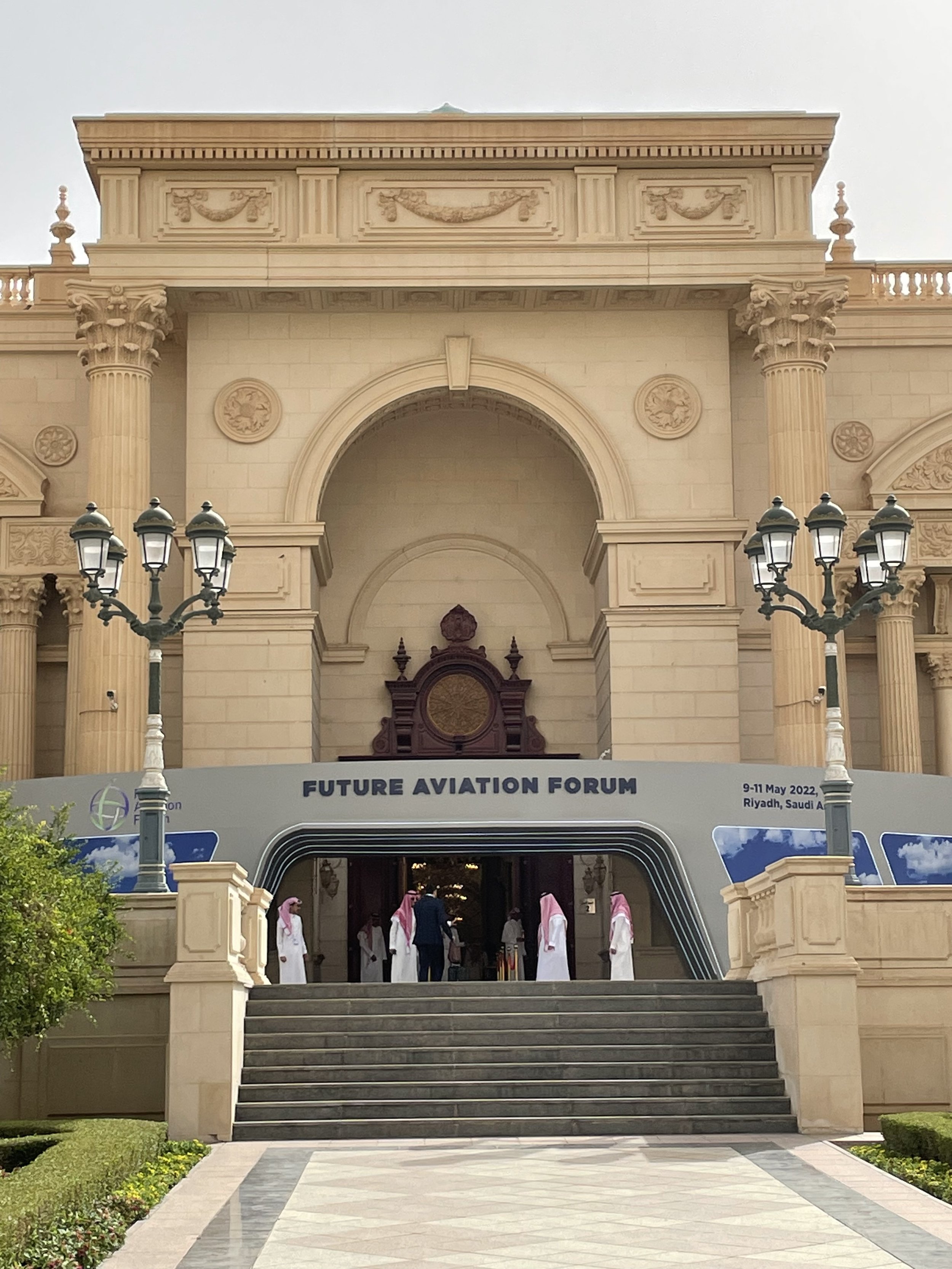Saudi Arabia outlines growth plans at Future Aviation Forum
The Middle East has been a focus of growth for the aviation industry this last couple of decades and it seems momentum hasn’t been lost yet.
To the plans to launch several new airlines in the Gulf we should now add the aviation chapter of Saudi Arabia’s ambitious “Vision 2030”.
This was one of the core themes of the inaugural edition of the Future Aviation Forum, which took place in the astonishingly grand setting of the King Abdul Aziz International Conference Center, in Riyadh, 9-11 May.
While the topics discussed at the Forum were of a universal nature, such as for example the very pressing sustainability agenda (an area of particular relevance for oil-driven economies such as Saudi Arabia), it was also an opportunity for Saudi authorities to showcase their plans in the field of aviation.
In short, Saudi Arabia plans to invest some $100B until the end of this decade in order to prop up the country’s transportation infrastructure, with a major effort in upgrading air connectivity.
At the Forum it was confirmed that the Saudi government is pushing ahead with plans to create a new national airline, although not many details were shared as to the market positioning and expected size and reach of this new carrier.
The kingdom is also aiming for a dual hub strategy, with both Riyadh and Jeddah airports channeling most of the expected growth, although a string of new resorts and tourism-oriented urban development projects (including airports ) mainly in the west part of the country facing the Red Sea, are also going to absorb a considerable share of the investment.
Projects such as Al Ula, which combines ancient World Heritage sites with a futuristic arts center are an appetizer of the sort of projects currently underway, such as NEOM in the northwest of the country, or the island resorts being developed by the Red Sea Development Company.
The goal is to get some 330M passengers through Saudi airports in 2030, a rather ambitious figure, which would require multiplying by more than 3 the (still) peak passenger flow of 103M in 2019 (I amended this paragraph, a previous version I had posted included a figure for the number of passengers at Saudi airports that was way too low! Apologies!).
For reference, in 2019, airports in Spain, a country with a larger population (47.5 vs 35M) that happens to be also one of the world’s top three tourist destinations, totalled “only” 275M air travellers.
Most of these passengers would be tourists. The goal of “Vision 2030” is to get 100M of them in this time-frame. Again, same comparison, Spain received “just” 84M tourists at its pre-covid peak of 2019!
Whether these goals are realistic or not, it seems clear that the Saudi authorities are determined to up the game when it comes to raising their country’s profile in the global aviation scene and this hasn’t gone unnoticed.
In addition to the new carrier, which may compete or supplement the current flag carrier, Saudia, and low cost airline flyadeal, Wizz Air’s József Váradi was also at the conference. The European low cost carrier signed a Memorandum of Understanding with the Saudi government, which may lead to the establishment of the LCC in the country, which would follow its recent launch of a local subsidiary in Abu Dhabi.
Several high profile speakers and attendees were at the show, from both the “traditional” side of the industry, such as IATA’s Willie Walsh (picture), but also some of the “new” air mobility landscape.
Aviation sustainability featured prominently in the programme and the likes of Val Mifthakov (ZeroAvia) and Éric Coté (Jaunt Air Mobility), Jon Gordon (Universal Hydrogen) took part in several of the sessions, as did other representatives of the new wave of green flight startups.
Interestingly, while oil is the basis of Saudi Arabia’s economy, many of the speakers mentioned how the kingdom is well placed to become also a major player in renewable energy and, particularly, in the production of green hydrogen too.
Proponents of advanced air mobility systems also flocked to the conference, since Saudi Arabia, like the broader Middle East, is seen as particularly receptive to this type of initiatives, both in terms of regulation and potential demand.
Well aware that recovery in air traffic depends in great measure on how many or how few hurdles passengers face in the post-covid world, Saudi Arabia, through its General Authority of Civil Aviation (GACA) is pro-actively promoting the creation of an harmonised international reporting mechanism for health and sanitary measures.
The idea, which is gathering feedback and, we were told, supports from the civilian aviation authorities of multiple countries, will be presented at the next ICAO assembly in September. It would consist in the establishment of a series of common parameters, a rule framework, for health and sanitary requirements to be transparent, clearly understood and managed across the board, so that passengers don’t face the confusion that a maze of different, sometimes contradictory regulations create.
Having myself been directly affected by one such situation and having had to cancel a flight recently due to the unclear and sometimes contradictory information provided by an airline (Air Arabia) and the destination airport, I really can’t wait for this to be implemented!
So, a pretty ambitious programme, but this is the Middle East, where huge projects are often completed in record time through sheer political and financial might. So, I guess by the time the next Future Aviation Forum takes place, in two years time, we’ll have already a much more clear picture of how all these projects are advancing and which ones are on track to materialize.




